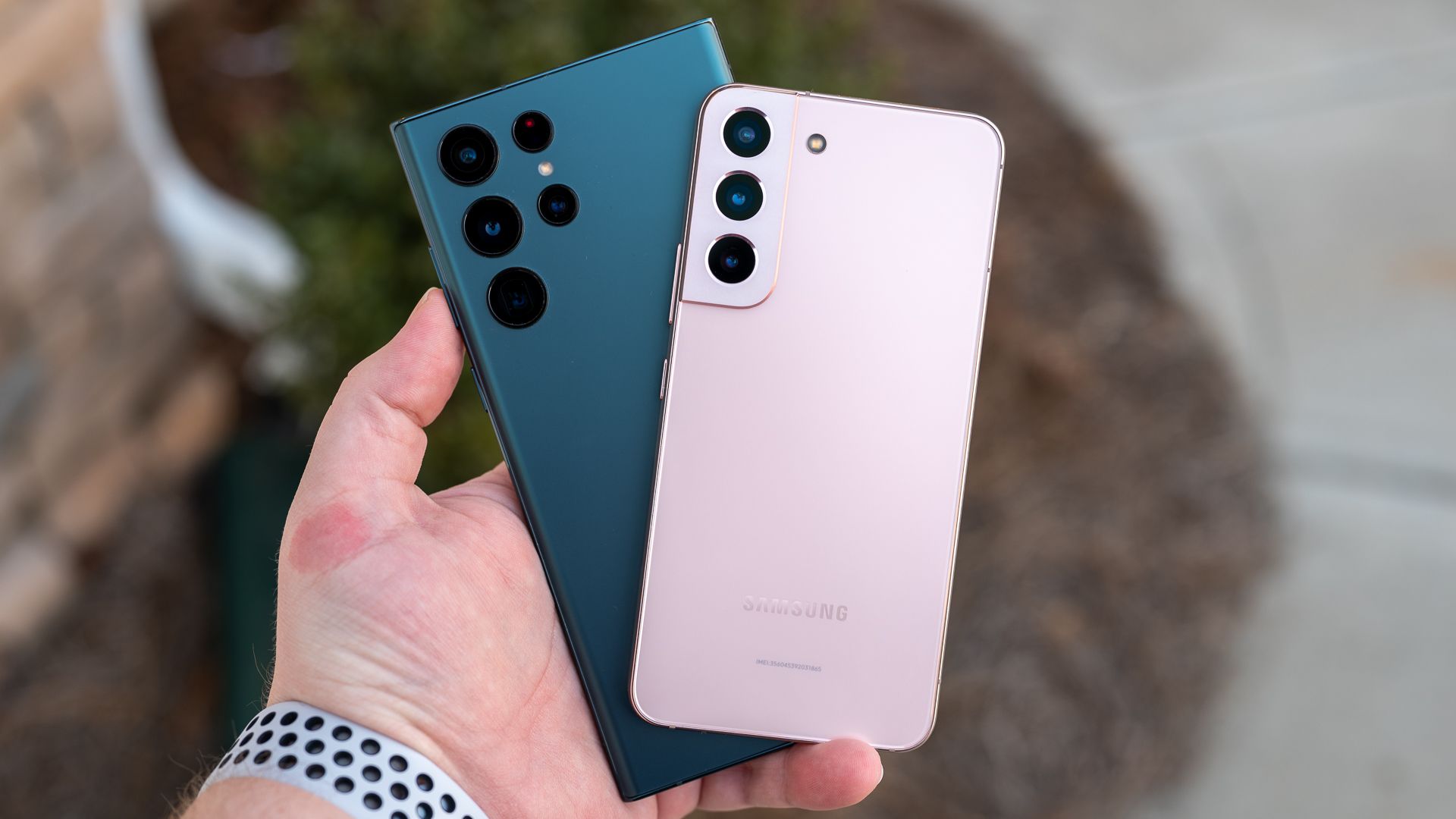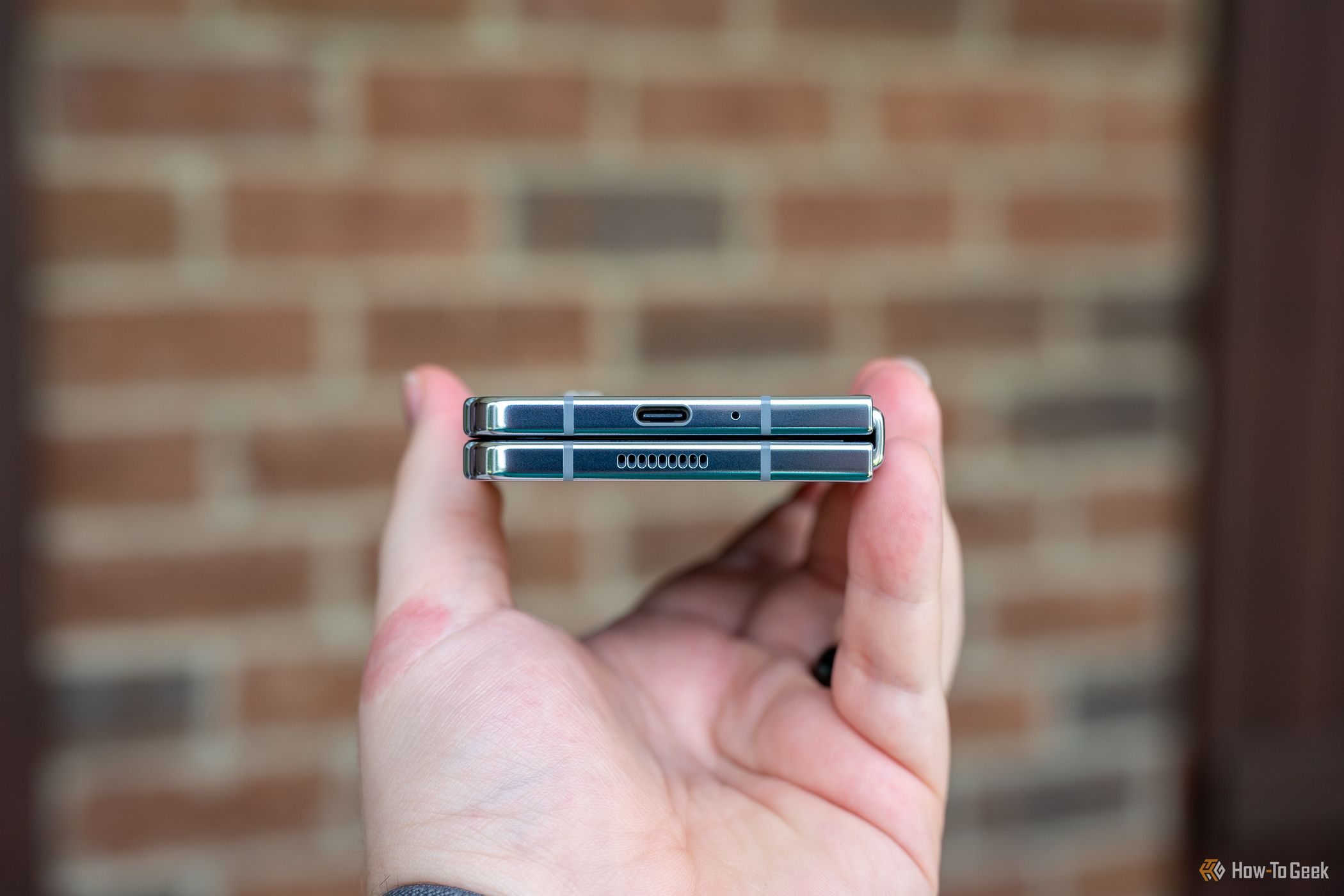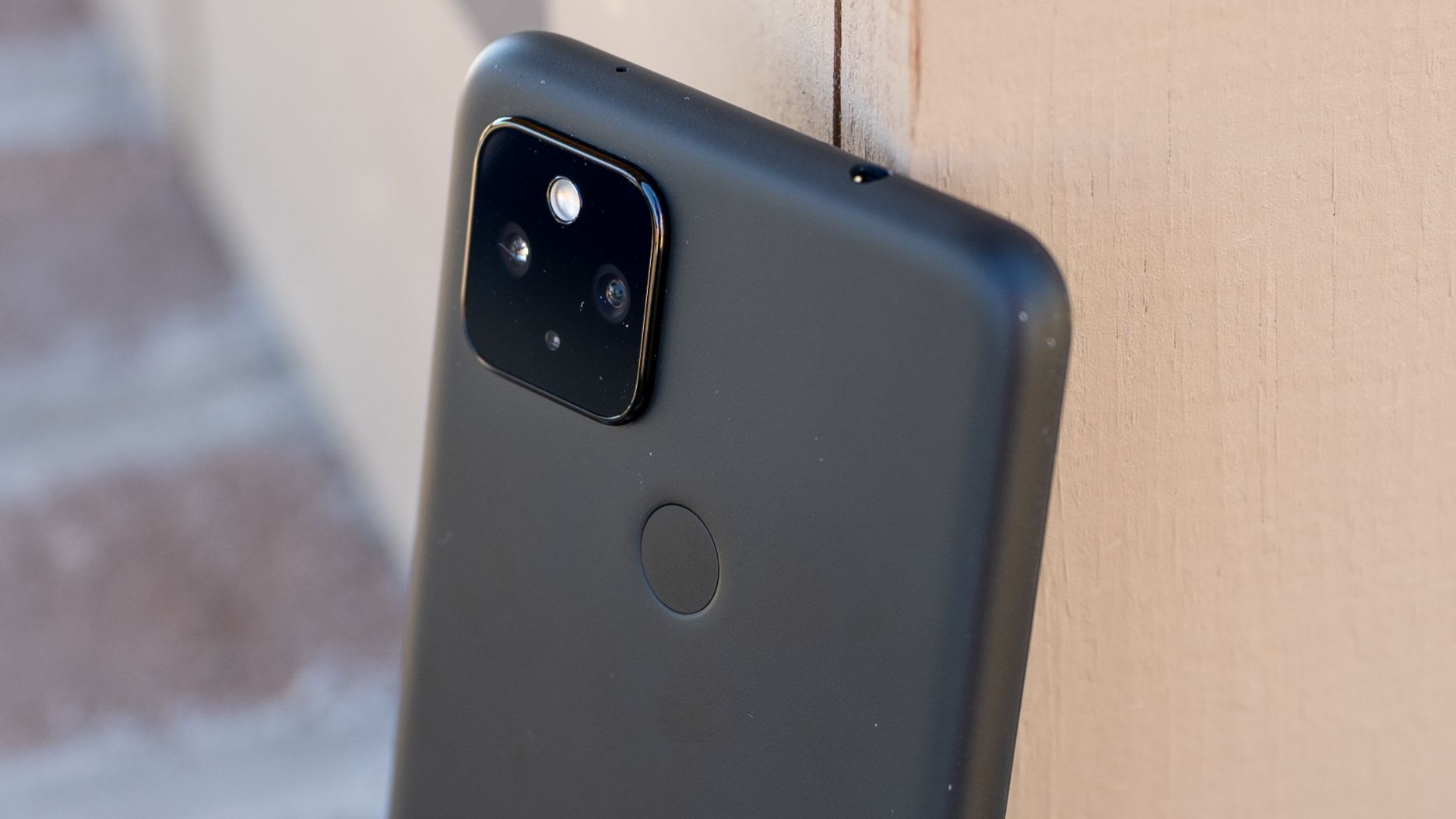
Nostalgic Tech Alert: Why These 8 Classic Smartphone Features Deserve a Comeback

Nostalgic Tech Alert: Why These 8 Classic Smartphone Features Deserve a Comeback
Quick Links
- Unique Designs
- Replaceable Batteries
- Front-Facing Speakers
- Notification LED
- Headphone Jack
- IR Blaster
- More Physical Buttons
- MicroSD Card Slot
Flagship Android phones have changed a lot over the years. While newer models boast fast processors, improved cameras, and stunning displays, we’ve also made some questionable sacrifices along the way. Some of those long-forgotten features should make a comeback.
Unique Designs

Justin Duino / How-To Geek
Smartphone manufacturers traditionally chase market trends to ensure their models stay competitive. That’s how we landed on today’s landscape of edge-to-edge screens, under-display fingerprint sensors , and multiple camera modules on the back . And sure, these trends are generally great for us, as they improve the overall user experience. We now have larger displays, conveniently located fingerprint sensors, and better photos. Still, most smartphones that have been released over the past few years lack identity. They all look similar, with only minor tweaks, such as a new camera module or glass texture on the back.
I miss truly unique smartphone designs. We used to have curved-edge displays, heart rate sensors, all-metal phones, and, my personal favorite, self-healing backs . Some manufacturers went a step further by adding pop-up cameras, swinging displays (LG Wing ), and various non-traditional display layouts. Back when we didn’t have edge-to-edge displays, you were able to recognize the phone brand and model just by looking at the front of the device. Samsung and HTC were especially consistent.
But it’s not all black and white. Gaming smartphones tend to have striking designs that make them stand out from the competition. Once in a while, a truly remarkable device like the Nothing Phone (2) pops up and challenges the status quo. The Nothing Phone (2) has a few cool gimmicks, such as the transparent back with a Glyph LED system and a quirky Android skin . I also quite like the Moto Razr foldable phone , mostly because the design pays homage to Motorola Razr flip phones from the early 2000s.
Replaceable Batteries
In the not-so-distant past, removable back covers and batteries were the norm. At some point, manufacturers ditched the design feature in favor of non-replaceable batteries for a couple of reasons. First, it allowed manufacturers to make thinner phones by gluing the battery and back cover to the phone. The second and more important reason is that by sealing the phone shut, manufacturers made the phones water and dust-resistant.
Many of us would agree that those trade-offs were well worth it. Still, manufacturers should go back to the drawing board and think of a design that’d allow them to implement user-replaceable batteries while still retaining some level of IP rating for water and dust resistance . Oh, wait, they already did—the Samsung Galaxy XCover 6 Pro has an IP68 resistance rating and a 4050mAh replaceable battery.
Since manufacturers can technically make replaceable batteries while maintaining a decent IP resistance rating, perhaps they just need some motivation. Thankfully, the EU has proposed a new law that will force smartphone manufacturers to make user-removable batteries by 2027 .
Front-Facing Speakers

Justin Duino / How-To Geek
If there’s one feature that would instantly improve your experience of content consumption, it’s front-facing speakers. Phones released today typically have bottom-facing speakers that can easily get muffled by your hand. To hear the sound without having to blast the phone at 100% volume, you need to cup your hand around the speaker.
Placing the speakers at the front of the phone allows us to hear them much more clearly, even at lower volumes. Some phones had one speaker on the top and one on the bottom to deliver stereo sound, further enhancing the gaming and movie-watching experience.
Manufacturers have ditched front-facing speakers in favor of larger edge-to-edge displays, but I’m not sure if it was a sacrifice worth making. Thankfully, gaming smartphones decided to bring back front-facing speakers. The best example is the ASUS ROG Phone 6D , which packs impressively loud stereo front-facing speakers in a slim package.
Notification LED
A notification LED is a small LED on the front or back of your phone that lets you know you have a notification. Most phones with notification LEDs allowed you to select different colors based on the app or notification type. You could have green for missed calls, blue for messages, purple for Instagram, and so on.
Thanks to OLED technology , our phones now have Always-On Displays (AOD) that can display multiple notification icons, the clock, date, and battery percentage, among other things. While the tech is undoubtedly great, AOD drains a bit of your battery , it’s distracting, and it can cause OLED screen burn-in . That’s why it’s hard to beat the simplicity of a single notification LED letting you know about a missed call or message without giving unnecessary details.
You could argue that notification LEDs are making a bit of a comeback as well. The aforementioned Nothing Phone (2) has the Glyph system on the back that can notify you of missed messages. If you find that too distracting, the Poco F4 GT integrates a subtle notification LED around the back camera.
Headphone Jack

Justin Duino / How-To Geek
The universal headphone (3.5mm) jack is a feature audiophiles miss the most. Android phones started removing the headphone jack largely after Apple ditched it in 2016 with the release of the iPhone 7. They did it to free up space in their phones for internal components and better water resistance. Many users opposed this change for several reasons.
While wireless earbuds are convenient, they have notable drawbacks . You have to remember to charge them, the sound quality isn’t great, and they have noticeable latency. Technically, you can connect wired earbuds and speakers via the USB port , but then you can’t charge your phone simultaneously. You may also have to carry around an adapter, which is just an unnecessary inconvenience. Thankfully, you can still find the headphone jack in gaming phones and some budget phones. Nonetheless, we’d love to see a headphone jack comeback on flagship smartphones.
IR Blaster
An infrared (IR) blaster is a small module at the top of a phone used to control various devices with built-in IR sensors, such as TVs and projectors. An IR blaster with a compatible app can effectively replace a TV remote.
IR blasters are a rare smartphone feature nowadays. This is likely because few people used them, and we now have smart TVs that can be controlled through proprietary apps and voice commands. Still, IR blasters are a convenient and dearly missed feature, especially for frequent travelers who like watching TV in their hotel rooms.
More Physical Buttons
![]()
Justin Duino / How-To Geek
Smartphones need more customizable physical buttons , period. Physical home buttons, various action buttons, notification sliders, and squeezable sides (like on the Pixel 2 ) were phased out in favor of sleeker designs.
The reason we like customizable buttons is that they provide a quick and reliable way to perform an action or open a frequently used app. You could use it to launch your contactless payment app or the camera to capture a moment that’d otherwise slip away. The iPhone 15 Pro brought back a bit of these old-school buttons with the “Action Button ,” but other devices need to get more creative for similar functionality .
The notification slider is a particularly sore loss. It was an easy way to switch off your notifications or set them to Do Not Disturb (DND) mode , making it much easier to turn off all sounds before an important meeting.
MicroSD Card Slot
Expandable storage in the form of MicroSD cards still exists on some phones, but it’s becoming increasingly rare. While MicroSDs are finicky and slower than integrated storage, they offer a cheap solution to add more storage.
They’re particularly handy for people who keep thousands of photos and videos on their devices. It’s speculated that phone manufacturers have removed expandable storage so that they could sell more expensive models with more on-board storage. Unfortunately, we most likely won’t see a return of MircoSD card slots anytime soon.
Fortunately, not all features from our list are gone for good. Gaming phones and some budget phones are still holding on to features like the headphone jack, action buttons, and front-facing speakers. Thanks to the EU, we could see an industry-wide return of user-replaceable batteries. That would be a true win for consumers, as we could get a couple of extra years from our devices.
Also read:
- [New] The Instagram Editor's Handbook Maximizing Video Impact for 2024
- [Updated] 2023'S Top Tweets The Highest Traffic Watchlist
- [Updated] 2024 Approved IPhone's Premier Video Tools Pick Cameo Over FilmoraGo?
- [Updated] Leveraging Content for Maximum Impact Growing View Count on TikTok for 2024
- Decrypt the Mystery of Insecure Connection Alerts and Secure Your Online Activity
- Effortless Setup: Secure Your Microsoft Wireless Mouse 5000 Driver Here!
- Get Your Nexiq USB Connection Up and Running with the Latest Drivers!
- Master Recorder A Comprehensive Review of Screen Recording
- Monetize YouTube Video | The Ultimate Guide to Ad Revenue
- Overcoming USB Detection Challenges: A User's Guide to Fixing Windows 10 Compatibility Issues
- Quick-Fixes for a Fresh Start on File Explorer
- Top Tips to Maximize Performance of Seagate Backup Plus Hard Drive - Insights
- Unpacking the CPU Clash: AMD's Latest Ryzen AI 9 HX 370 Triumphs Over Apple's M3 Max in Processor Speed Tests
- Title: Nostalgic Tech Alert: Why These 8 Classic Smartphone Features Deserve a Comeback
- Author: Joseph
- Created at : 2024-10-24 08:59:18
- Updated at : 2024-10-24 21:28:34
- Link: https://hardware-help.techidaily.com/nostalgic-tech-alert-why-these-8-classic-smartphone-features-deserve-a-comeback/
- License: This work is licensed under CC BY-NC-SA 4.0.